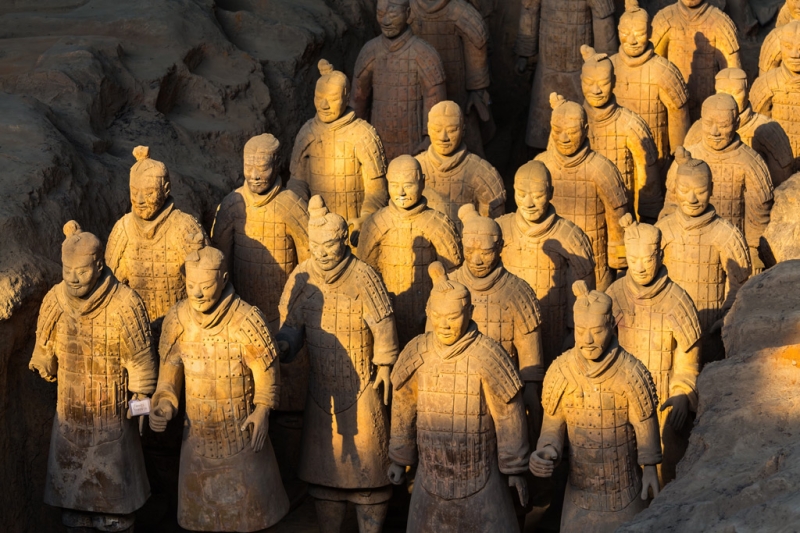
Tens of thousands of tourists from all over the world come to the Chinese city of Xi’an, 30 kilometers from which there is an amazing monument of the past – “The Tomb of Qin and the Terracotta Army” (on the map). The unique museum is open daily from 8:30 to 17:00, with an entrance ticket price of 150 yuan (approximately 1,300 rubles). A visit to this museum is a mandatory part of the official program of visits to China by high-ranking officials and heads of state.
In the central hall you can see more than 1100 sculptures, but this is only 1/6 of all those statues of warriors who were buried with the emperor. About a thousand more soldier figures stand on the second and third floors. The museum’s curators say that all visitors can be divided into two groups: some see beauty in the details and can gaze for a long time into the faces of ancient warriors, while others admire the scale of the structure.
The interesting thing is that 50 years ago, humanity did not know about the existence of the Terracotta Army. What is the history of this unique Chinese landmark?
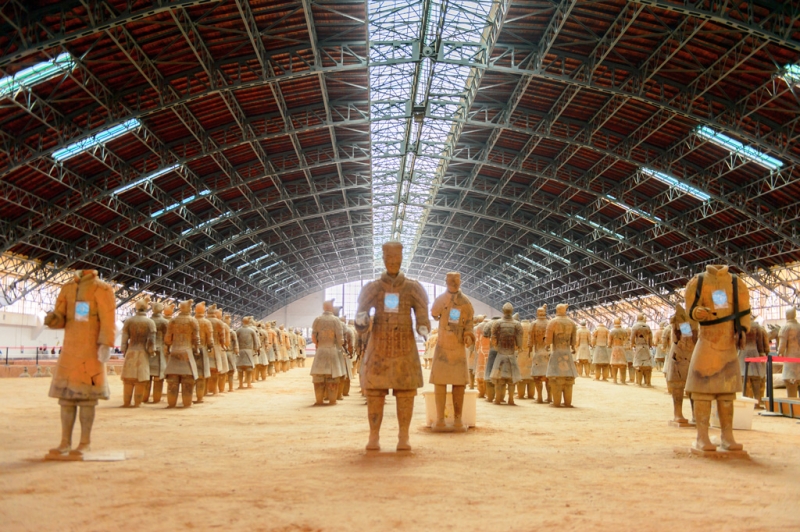
The year was 1974. An ordinary Chinese farmer, Yan Ji, decided to dig a well next to his house. At a depth of five meters, he unexpectedly discovered a stone head of a warrior, recreated to the smallest detail, which he initially mistook for the real thing. Frightened, Yan Ji took the head to the village chief. The news of the discovery aroused great interest among scientists and archaeologists around the world. It was decided to continue the excavations.
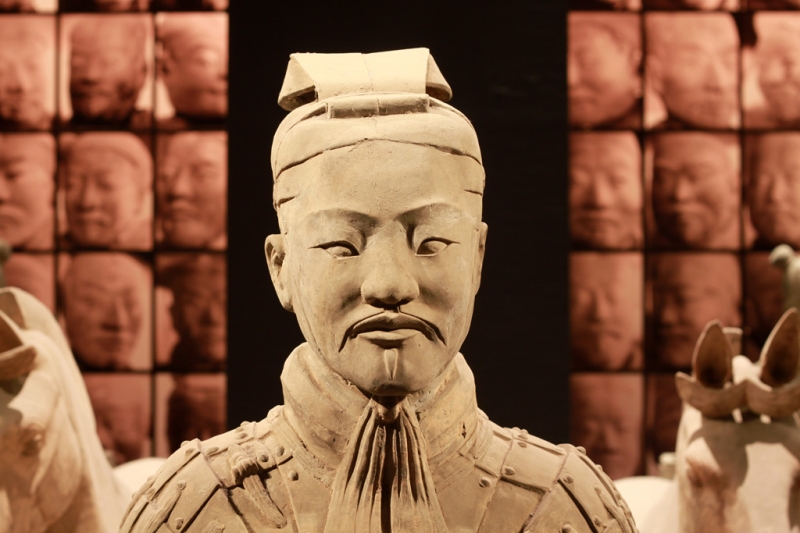
Experts managed to find over 6,000 underground guards. As it turned out later, the army was buried a little over two thousand years ago. But this was just the beginning. In 1980, archaeologists were lucky enough to find another battle detachment of the emperor, consisting of 2,000 statues, and in 1994, the “general headquarters” of the army was discovered – figures of the highest military ranks. A natural question arises: why did the craftsmen spend so much effort on creating a huge number of sculptures, and for what purpose were they buried subsequently? To answer these questions, it is necessary to turn to Chinese history.
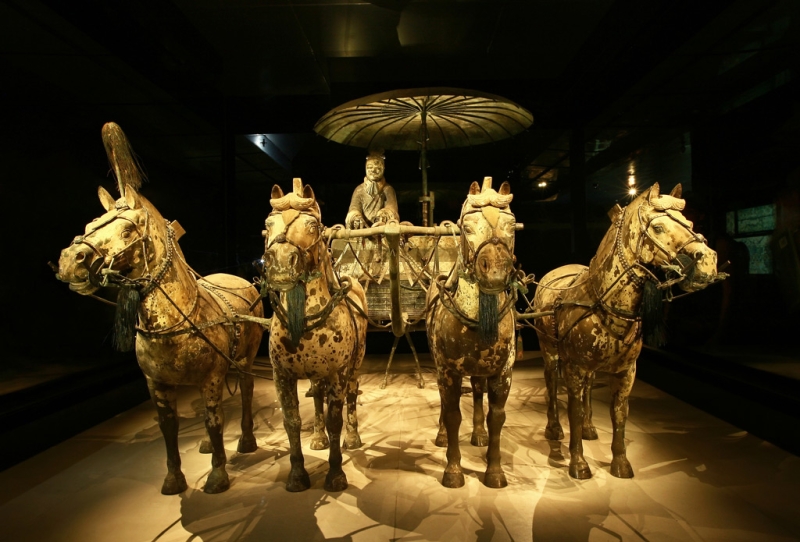
The most famous emperor of China is Qin Shi Huang. After his death, he was buried in a tomb, which is a complex of a grandiose scale: the area of the mausoleum reaches 62 m², and the tomb itself is located at a depth of 130 meters. The emperor’s burial is located in the center of a unique structure, which is surrounded by numerous graves of relatives and his servants. The tomb was created during the lifetime of Qin Shi Huang: 710 people worked on the construction of the mausoleum for more than 40 years.
This ambitious emperor managed to subjugate the seven kingdoms fighting for power that then existed in China. Having become the sole ruler, Qin Shi Huangdi took a cruel and sophisticated approach to strengthening his influence. So, on suspicion of infidelity, about 450 scientists and healers were executed. The emperor was absolutely unshakable in the belief that his dynasty would always be in power, and tried in every possible way to prove it. An example of this is the Great Wall of China, which he ordered to be built to separate the unified Chinese state from the nomads. On the other hand, the ruler was very afraid of dying, so he repeatedly sent expeditions to find the elixir of eternal life.
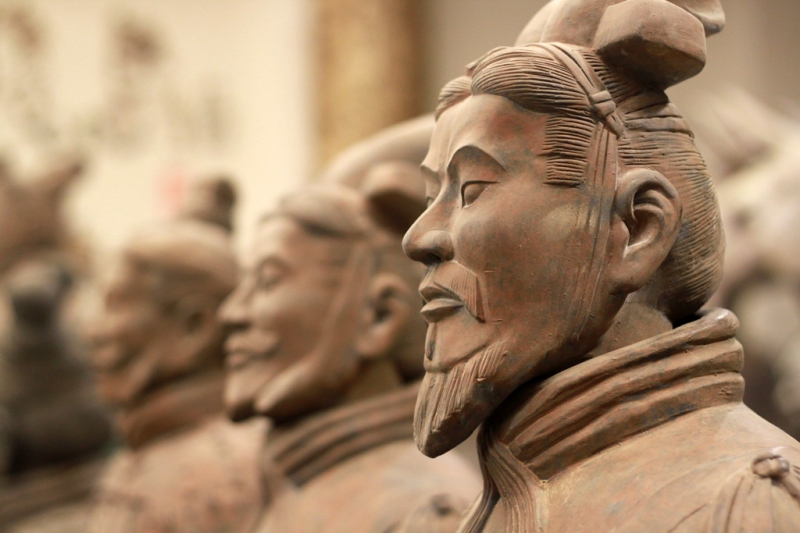
According to ancient Chinese tradition, 4,000 of the best warriors were supposed to be buried with the deceased emperor. Although with difficulty, the advisers managed to persuade Qin Shi Huang not to do this, due to the threat of a popular uprising. It was decided to make exact copies of clay soldiers who were supposed to guard the ruler in the afterlife. The creators of the statues did their best and showed simple jewelry skill: most likely, the faces of the warriors were molded from real prototypes, since in the entire clay army of many thousands it is difficult to find two identical soldiers. Even hairstyles, clothes, shoes and uniforms correspond exactly to that time.
But perhaps the only difference that makes the sculptures different from people is their height. The height of each warrior reaches almost two meters. Scientists were able to establish that each figure was subjected to prolonged firing, and the temperature in the ovens reached 1000°C. After such treatment, the warrior acquired a terracotta hue, which is where the modern name of this amazing army came from. Then the artists got to work, hand-painting the soldiers. It is noteworthy that if you leave the statue in the fresh air, the paint will soon disappear without a trace. To preserve the original color, scientists had to immerse the sculptures in a container where a certain level of humidity was maintained, and also irradiate and treat them with a special composition. In addition to the figures of soldiers, archaeologists also found sculptures of musicians, acrobats, weightlifters, scientists and horses.
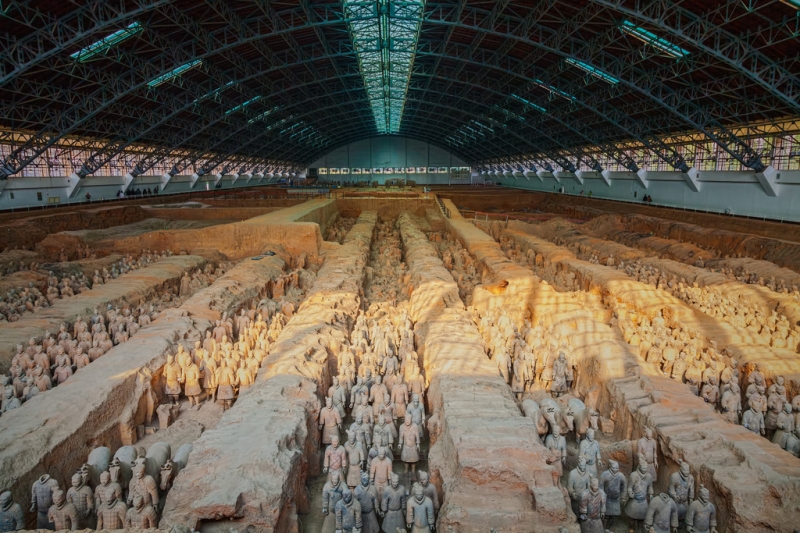
The warriors of the Terracotta Army are located in 11 passages, which are separated from each other by low walls. Tree trunks were laid on top of these walls, covered with cement mortar and mats, and earth was poured on top. It was assumed that this way the tomb would be better protected from robbers. But a few years later the army was “attacked.” After the death of Qin Shi Huang, his son Er Shi Huang, who turned out to be a weak-willed ruler, became the head of the state. His policies displeased the people, and soon a revolt arose. The crowd of indignants had nowhere to get weapons to resist the government troops, so they plundered the Terracotta Army.
There are many legends according to which unprecedented treasures were buried with Qin Shi Huang. Many adventurers went in search of the treasured treasure, but, as time has shown, no one managed to discover it.
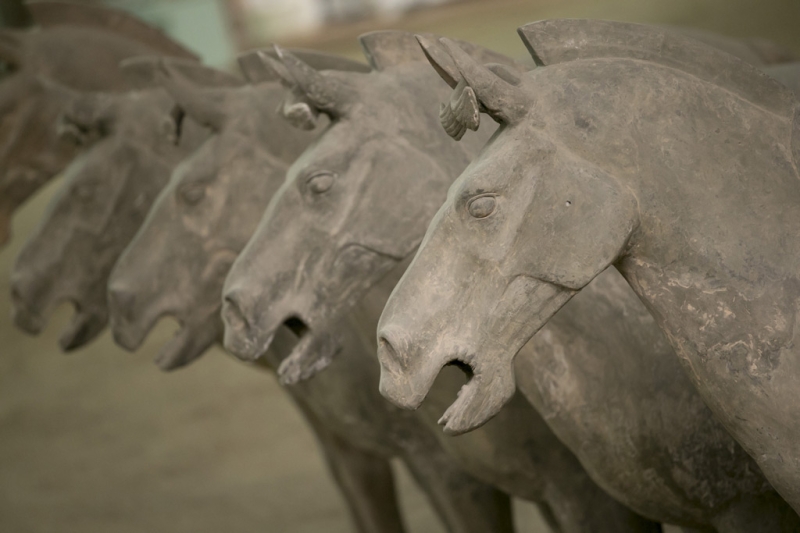
If you want to see the Chinese Emperor’s Terracotta Army, you’ll first have to fly to Beijing. From the capital of China to Xi’an, near which this attraction is located, local airlines fly and special high-speed trains run. Tourists most often choose to travel by rail, since the travel time is only 5-6 hours, and the cost of a train ticket is two times cheaper than a plane ticket.
On OneTwoTrip you can book hotels around the world online. The service offers more than two million accommodation properties.


